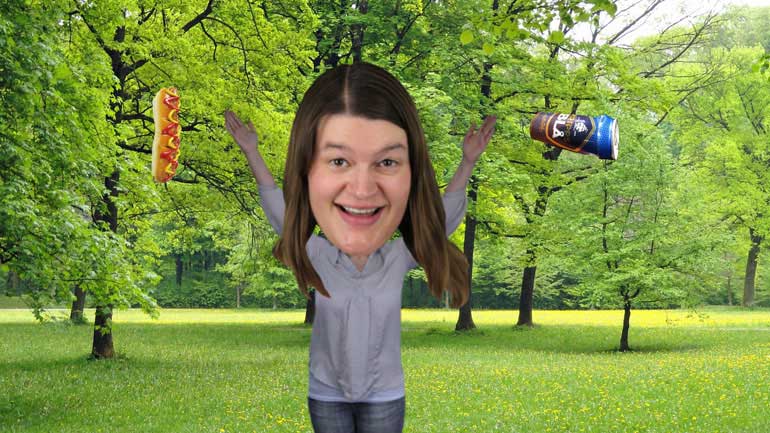ShmoopTube
Where Monty Python meets your 10th grade teacher.
Search Thousands of Shmoop Videos
ACT English 3.3 Passage Drill 185 Views
Share It!
Description:
ACT English : Passage Drill 3, Problem 3. Which choice best fits into the sentence?
Transcript
- 00:03
Here’s your Shmoop du jour, brought to you by storms of frogs.
- 00:07
Bad for frogs, great for the nation of France.
- 00:21
How would you correct this underlined segment from the passage, if at all?
- 00:25
that?
- 00:26
And here are the potential answers...
Full Transcript
- 00:31
Let’s start the elimination process by nixing the choices that don’t make any sense.
- 00:36
Because...ya know...as a general rule, sentences that
- 00:38
don’t make sense are frowned upon in English language circles.
- 00:42
Option (D) is the worst offender.
- 00:43
Omitting the underlined portion turns this sentence into gibberish. Check it out:
- 00:48
"But tornadic waterspouts can reach 100 miles per hour, can still be quite destructive.”
- 00:53
Clearly we need some kind of word to connect the last phrase to the main sentence.
- 00:57
Otherwise, no one will know what this meteorologically obsessed writer is talking about.
- 01:02
OK, now let’s point our lasers at the second nonsensical option: choice (C).
- 01:06
We’ll read the sentence (C)’s way: “But tornadic waterspouts can reach 100 miles per
- 01:11
hour, in which can still be quite destructive.”
- 01:14
Yeah, that sounds weird. This is because “in which” is a preposition used to signal when
- 01:19
something is contained within something else.
- 01:22
The final phrase isn’t trying to tell us what’s inside of “100 miles per hour,”
- 01:25
so we can definitely get rid of option (C).
- 01:27
Now we’re left with choices (A) and (B),
- 01:29
which ask us to deal with the never-ending conundrum of “that” vs. “which.”
- 01:33
Really, it’s not a conundrum because it’s a question with an easy answer.
- 01:37
We use “that” to introduce a phrase that’s essential to a sentence. See what we did there?
- 01:44
We’ll say the sentence again minus the final phrase. “We use ‘that’ to introduce a phrase.”
- 01:49
Something was lost, right?
- 01:51
If this were all we said before, our sentence would’ve been remarkably unhelpful, because
- 01:55
it wouldn’t have identified the type of phrases the word “that” introduces.
- 02:00
Let’s try this test on our sample sentence and see how essential the final phrase is.
- 02:03
“But tornadic waterspouts can reach 100 miles per hour.” Hm, seems fine to us.
- 02:08
The part about these winds being destructive isn’t totally necessary to the meaning of the sentence.
- 02:12
This means that “that” isn’t necessary either.
- 02:15
Therefore, we can cross out (A) and dub (B) the correct answer, since we use “which”
- 02:19
to introduce phrases that are nonessential.
- 02:21
Because who doesn’t already know that 100 mile per hour winds can be destructive?
Up Next
ACT English: Punctuation Drill 2, Problem 2. Where should the semi-colon be placed?
Related Videos
ACT English: Punctuation Drill 3, Problem 1. How should this sentence be changed so that it is grammatically correct?
ACT English: Punctuation Drill 3, Problem 2. How should we properly hyphenate the words in this sentence?
ACT English: Punctuation Drill 3, Problem 4. Which choice best formats this list of items?
ACT English: Punctuation Drill 2, Problem 1. Which choice of punctuation best completes the sentence?




